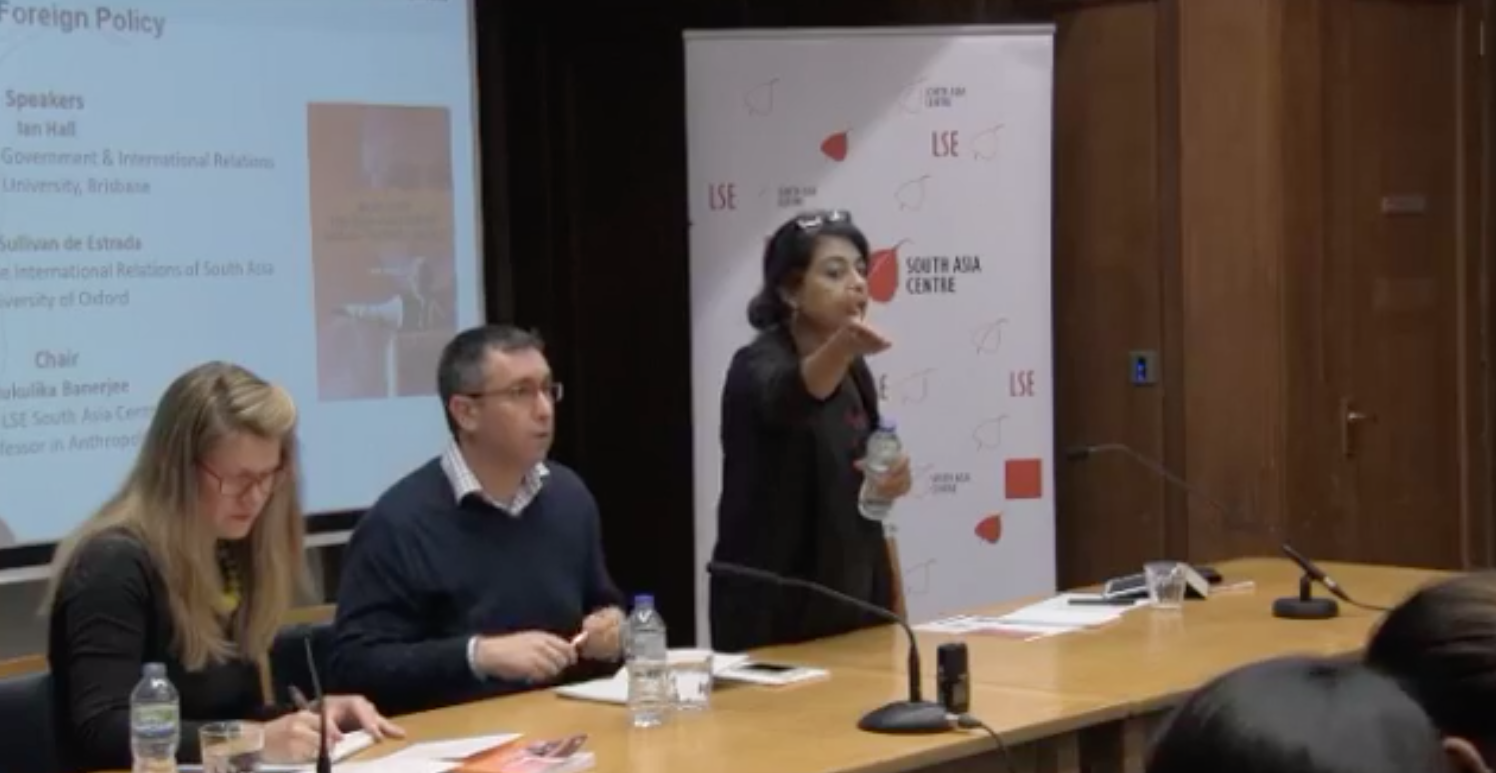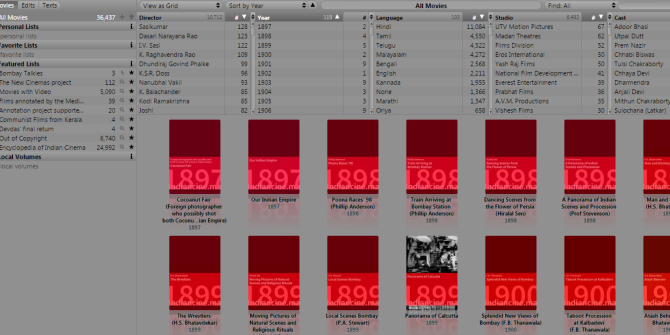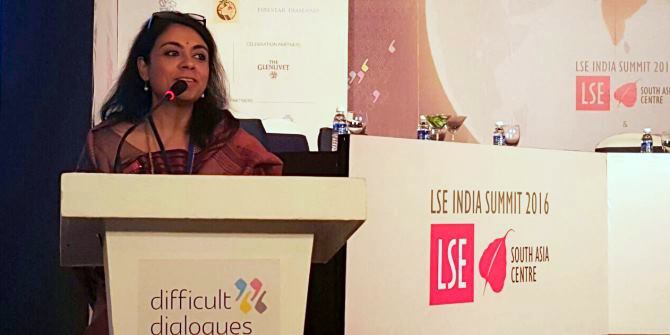As a part of a tour for his new book Modi and the Reinvention of Indian Foreign Policy (Britsol University Press, 2019), Professor Ian Hall (Brisbane, Australia) joined students and staff at LSE South Asia Centre on Tuesday, 29 October 2019. In the session, Professor Hall highlighted the key arguments of his book: that though one would imagine Modi would concentrate his time in office on domestic politics, India’s foreign policy appears to have undergone a reinvention. Although not too far off from the foreign policy tradition of the country, Professor Hall argues that Modi has infused a new energy in the way foreign policy is conducted. Modi’s policy draws from Hindu nationalist doctrines and from the position India sees itself in in the world.
Professor Kate Sullivan de Estrada (Oxford University) provided valuable comments on both his remarks and the book. The session was chaired by Dr. Mukulika Banerjee (Director, LSE South Asia Centre).
Watch a recording of the event here
Following an introduction, Dr. Banerjee remarks that it is true that Indian foreign policy is in the news all the time, but what is important to note is that this administration is pitched as being a ‘game changer’ in this field. She hopes this session and this new publication will help us understand what this means in practice.
Change in FP Conduct
Professor Hall begins by apologising for the title of the book, which he believes is misleading. Though the book is entitled Modi and the Reinvention of Indian Foreign Policy, he says that Modi and his allies make it appear like Modi has reinvented Indian foreign policy. However, the basic substance of India’s foreign policy has not changed. Any change lies in fact of its orientation. Professor Hall says there is an obvious transformation in the way Modi conducts his foreign policy as he uses it energetically to state this distinction. He says Modi is more energetic, not just in comparison to the previous Prime Minister of India, Manmohan Singh, but in comparison to other world leaders. He substantiates this statement by stating that Modi travelled 23 times during his first term in office, compared to Xi Jinping who travelled 13 times and Trump’s 10 official foreign visits.
New Initiatives – New Optics
Professor Hall admits that there has been some rebranding of Indian foreign policy. There is a new emphasis on the ‘Look East’ policy, aimed to allow India to become strategically closer with its East Asian counterparts. Professor Hall highlighted some new initiatives, such as the ‘Yoga Day’ and the ‘International Solar Alliance’ under Modi. Such initiatives, Professor Hall terms as being ‘Modi in style’, meaning that they involve high-profile people and different forms of social mobilisation; this is similar, Professor Hall remarks, of the way Modi would configure his domestic policies when Chief Minister of Gujarat.
There is also a mark shift to in the optics of foreign policy under Modi, according to Professor Hall. The places Modi chooses to visit, Professor Hall believes, has great significance. For example, he often goes to religious places and temples, or he hands over religious texts as presents to foreign leaders. Modi even visits mosques and Buddhist sites. This Professor Hall believes has led people to think that there is a new Modi doctrine, a new approach to foreign policy and a new language that’s entered the foreign policy discourse.
Panchsheel gives way to Panchamrit: Removing Nehru
Next, Professor Hall talks about Ram Madhav’s resolution that has become the new cornerstone of Indian foreign policy. Madhav, he argued has introduced Sanskrit terms to foreign policy. The tenants are samman-dignity, samvad-dialogue, samriddhi-shared prosperity, suraksha-regional and -global security and sanskriti evam sabhayata (cultural and civilizational links. These terms are picked up by Modi and Indian diplomats. Professor Hall argues that there is clearly an attempt to reinvent domestic policy and get rid of Nehru’s legacy. Similarly, panchamrit, is a way to erase the Nehruvian legacy in foreign policy.
Professor Hall later argues that there is a felt need to rewrite Indian foreign policy in Hindu nationalist terms. Professor Hall points out that Hindu nationalist texts do say a lot about domestic politics but not so much on international relations. Therefore, there is a sense that comes from within the BJP itself, by people such as Ram Madhav and even Modi, to erase the Nehruvian ideological legacy in Indian foreign policy.
The Economic Element
Professor Hall goes onto say that at the centre of Modi’s foreign policy is the economy. Foreign policy is meant to serve national economic development and using Shahi Tharoor’s words, Modi is undertaking ‘multi-alignments’ i.e., forming partnerships with a range of powers for India’s advantage. However, Professor Hall says that on one end of this position, the government looks upon globalisation favourably while on the other hand, there is an element of caution against trade liberalisation and protectionism. There is also the use of Foreign Direct Investment which Professor Hall says is a primary engine of economic growth, which can be primed through to economic foreign policy.
The Charm Offensive
Professor Hall believes that the there is a change not so much in the substance but more so in the orientation of Indian foreign policy due to an element of using charm as an offensive strategy. One of the reasons Modi travels so often is with the hope to charm investors, diasporas and other foreign leaders. This worked for the first few of years , helping FDI flowed into India. However, Professor Hall believes there is another aspect to this and that is related to Modi’s ego and his strong sense of self.
The Domestic Element
Professor Hall further argues that part of the attempt to reinvent Modi’s image lies in using foreign policy to ensure domestic dominance. When Modi came to power, there were many who said he would not invest in foreign policy because he did not have much experience of it, and there were linguistic barriers in the possible role he could play. He was perceived before become PM as a provincial leader with strong-man credentials, but not as a statesman. Saying this, all the data and research tells us that the link between public opinion and foreign policy is very weak in India. People care more about roads and schools rather than foreign trips. Furthermore, parliamentary oversight on foreign policy in India is notoriously weak.
The second element of this that Professor Hall interestingly puts forward is that the point of this new branding is not targeted at foreign leaders but at changing Modi’s image internally – his foreign policy is about domestic public opinion. Professor Hall argues that if we were to look at public opinion polls, the one area in which the Modi government is constantly praised is foreign policy. If we were to look at the election campaign reporting (even before Balkot strikes) rural voters thought Modi’s actions in the realm of the international was helping bring ‘respect’ back to India. This respect was the most important thing they valued, and Modi has played on this. Professor Hall also points out how Modi often talks about the power of the Indian passport.
Professor Hall brings out a paradox therefore that what should be aimed externally is aimed internally and it runs against established research and understanding of how foreign policy needs to be made.
Professor Sullivan de Estrada
Professor Sullivan de Estrada begins by saying that books on Modi tend to be either adulatory or dismissive, but Professor Hall’s book are neither of those. She agrees that the title of the book is misleading however the idea of a more visible policy matters even if it is not too far away in substance from India’s previous foreign policy.
On the text itself, she believes it was quite an encyclopaedic work describing it as “a wonderful compendium of how foreign policy played out and the India’s foreign policy machinery, therefore, it is a great reference guide.” Speaking of the methodology, she thought exogenous forces are downplayed in the book. For example, Professor Hall talks about Hindu nationalist thought not working to substantially change foreign policy ideas. Professor Sullivan de Estrada asked how far is that the problem of the idea rather than external constrains like an unpleasant international reaction?
She also commented on the affinity of the outside world with India. India has changed with liberalisation in 1990’s, the media revolution and the growth of the middle class for example and the Indian public has become more aware about India’s place in the world. Professor Hall says in the book that it is a curious choice for Modi to use foreign policy to enhance his domestic currency but Professor Sullivan de Estrada questions where if it is really that curious?
She comments further on how Modi’s foreign policy is not much different from India’s FP of the past. She speaks of how Nehru comes away very thinly in ideational tones and that Hindu thinking has always been a part of Indian political thought. Ideas such as a missionary impulse to take Indian thinking to the world is apparent in aspects of Gandhian and Nehruvian thought and earlier biographies in Indian diplomats. Modi’s ideas are not very different – they all come out of the same pot.
She ends her remarks with an interesting question that deals with the book as a political intervention. She said Professor Hall gives an in-depth analysis of Modi and looks less at international compulsions as well as compresses Nehruvian thinking to some extent. To what extent she asks does Professor Hall see himself as an agent of reinventing Modi’s foreign policy through the book?
This article gives the views of the author, and not the position of the South Asia @ LSE blog, nor of the London School of Economics.
Supriya Ravishankar is currently studying for an MSc in International Relations at LSE. She recently graduated from St. Xaviers College, Mumbai. Her research interests include the study of nationalism, emotions in International relations and geopolitics in South Asia. She is also a South Asia Centre MSc Student Ambassador.









JEE MAIN rank predictor 2020
One thing that marks the excitement is the anticipation of the examinees after the exams are over. Once they submit their answer sheets,